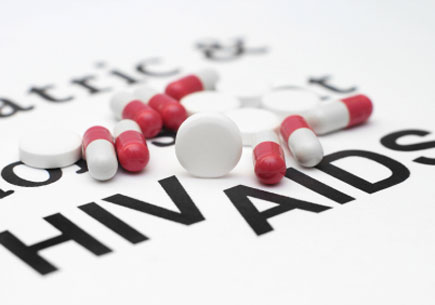
Recently in the news, papers, news organisations and other world media are reports of ‘groundbreaking trials’ testing a possible cure for HIV. Everyone’s talking about it, scientists, people of faith, doctors, the public, HIV experts, me, you!
It’s very easy to get caught up in the excitement of a cure, after all, it’s what we’re hoping for, it’s our goal. The reason we exist is to challenge and fight HIV. I honestly smile everytime I see a HIV Cure article yet I’d never expect to be writing the phrase ‘The Cure for HIV has Finally Arrived” because alas, it hasn’t.
Make no mistake, we’d made significant advances – there’s been reports of babies being cured of HIV, we’ve used Caner Drugs to eradicate HIV, we’ve cut HIV out of DNA and we’re even experimenting with our own genome now! And we did it again with the CRISPR study!
Many methods are being developed and tested to eradicate the virus, scientists from Johns Hopkins University School of Medicine, University of California, San Francisco and Yale University have made a breakthrough in the fight to eradicate HIV, by figuring out how to train immune cells to locate and destroy mutated forms of the virus.
Françoise Barré-Sinoussi is the Nobel laureate who co-discovered the HIV virus she said back in 2012 the a cure for HIV is in sight. HIV is an aggressive virus, mutating, copying and hiding within us, in some studies, it can take just 2 weeks overcome our best attempts to edit it out of

Glowing cats to cure HIV – We’re not making this up, I promise!
our cells. Nevertheless, we continue to find innovate ways to experiment and combat the virus (Green Glowing Cats Anyone)?
Why are we linking to all these Cure Articles? – Well the message is simple. There is no cure for HIV so it’s premature for the media to suggest this, what is missing is the real message. While there is a real hope for people living with HIV today, a cure is a long way off. Always temper a ‘cure article’ with some common sense, they may simply be functional lab cures, not for the human race.
It’s not all doom and gloom, recently scientists may have discovered a way to spur the human body to create antibodies capable of blocking the HIV virus. It’s early work, but we’re trying to rewrite some rules of vaccine development to overcome the extraordinary challenges of HIV.
However, we need to slow down, and get some perspective. To quote a famous professor of HIV pharmacology: “We need more data.” We need to take stock, get the facts right, and allow for scrutiny of the case by the scientific community.
Other than the potential of Dr Persaud’s research to stimulate further investigations, then, what is the best thing that can come of all this media frenzy?
So what then is the best thing that can come out of all the media frenzy in reporting a cure for HIV?
The great hope is that this moment represents the greatest mass HIV awareness campaign since the Don’t Die of Ignorance ‘tombstone’ campaign of the 1980s. Rarely does HIV make such headlines, and we have a real chance to educate people whilst their interest is piqued.
We must tell people that the story of HIV is very different now, and we must take this opportunity to communicate new messages through the media whose attention we currently have – messages which can correct people’s out-dated misconceptions.
- Let’s talk about testing, and the importance of early diagnosis.
- Let’s talk about effective drugs, which when prescribed early enough can help a patient live a long and full life.
- Let’s talk about condoms and prevention.
- Let’s Tell people about PEP and PReP and let’s ensure our NHS will fund PrEP.
- Let’s tackle stigma!
Today there is no reason for anyone to be born with, or acquire HIV but people are still being diagnosed. Leicester has a 13.8% higher late diagnosis rate than the rest of the country. Sadly, 590,000 babies every year are still born HIV-positive in the developing world: an unnecessary tragedy.
We can do something about that right now, with the tools we have – If we increase testing and make it more regular and consistent. In the UK, 95% of women take the HIV tests during pregnancy. And with effective treatment the chance of the baby being born positive is less than 0.5%. We should be aiming for the same success all over the world
Above and beyond a media storm about a supposed ‘cure’, there are good news stories we can make happen today.
Is the ‘cure’ story exciting? Yes. Is it scientifically plausible? Yes. Will it stimulate more research? Almost certainly. But it is extremely premature to hail it as a cure that will translate into routine clinical care any time soon. We need much more data.
So if you or your child are HIV-positive, then please… don’t stop taking your tablets. And if you have had unprotected sex, take the test. Condoms, education, testing, and access to treatment are our real weapons against HIV, and we need to learn to use these correctly if we want to make a real impact today.
STOP BEING AFRAID OF HAVING A HIV TEST!
For some people the idea of being tested for HIV is as simple as making a note in a calendar, an entry which sits comfortably beneath a dentist appointment and above a mother’s birthday. For others, the idea of making that appointment, or taking that long walk to the clinic, is one of the most nerve-wracking experiences they can imagine. However, in an age where the numbers of people diagnosed with HIV are increasing, has our natural fear of the unknown become a luxury we simply can’t afford?
Many years ago it was a scary disease. We called it AIDS and it became a name associated with sin and death. The massive number of infections, particularly in the gay community, were staggering, and as the death toll slowly crept up, nations across the world panicked. It’s impossible for any society to come through such a dark time and emerge unscathed, and so the fear of a silent killer left a scar on our cultural memory which has never really healed, and the mere mention of HIV and AIDS still has a way of stopping conversations.
Thankfully, things have changed since then and treatment for HIV and AIDS is better now than it has ever been. People who have the condition are now finding that their lives have not changed completely, and they are still able to live as long and do all the same things they could before. It’s true that they now have a few additional concerns to think about but with the help of medication, HIV is now manageable.
The truth is that it’s very easy to get ‘caught short’ in life and sometimes that leads us to take risks when we know we shouldn’t. The true test is when we make these mistakes, we have to make sure that we take the time to know our own status, since it doesn’t just affect us, but also the people we care about. HIV is no longer the death sentence it used to be and people are able to live normal, healthy and happy lives like they did before. However, this is thanks to the amazing progress we have made in treating the condition and we can only begin to do that when we make the decision to get tested and keep on top of our health. It’s a scary prospect to some and no one takes that for granted, but by taking the chance to be tested, you could be buying yourself years of life
what are you waiting for?
Get yourself tested. Go to your doctor, go to the GU clinic, buy a home testing kit online or apply for a free home sampling kit. – Have questions or want someone to talk you though the process? We offer offer a completely free and confidential rapid HIV test (results within 60 seconds from a simple finger prick test)! We use the Insti HIV test produced by BioLytical laboratories.
You’re reading this because your either clued up to sexual health and HIV advocacy or someone has shared this article with you. If you’re the former, you probably don’t need this message, so share it to people who havn’t got round to having their HIV test yet.
Thanks for reading, let us know what you think in the comments below, or you can find us on Facebook, Twitter or Instagram!














